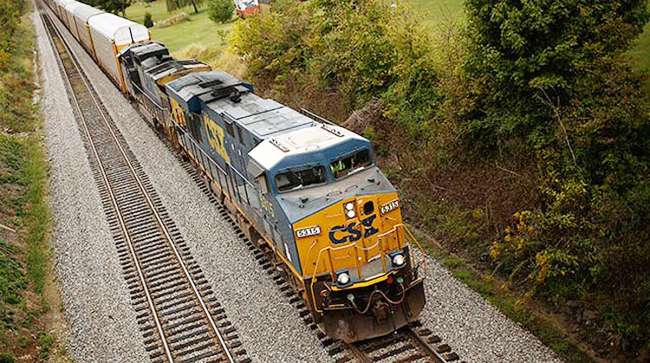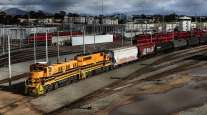Senior Reporter
Freight Rail Growth Slows Due to Competition From Trucking

[Stay on top of transportation news: Get TTNews in your inbox.]
Growth in rail freight has been hampered this year by competition from trucking, in part driven by trucking’s falling rates and extra capacity.
Association of American Railroads officials gave that assessment during the group’s year-end news conference Dec. 4 in Washington.

Gray
Through the end of November, North American rail volume was a combined 33,846,755 carloads and intermodal units. That is down 3.6% compared with the same period in 2018.
“The reality is the competition of the trucking industry is always there. It is going to vary year to year, depending on the supply of trucks available, the number of drivers available, and again, the patterns of business that are being moved,” said John Gray, senior vice president of policy and economics at AAR.
“Is trucking, as a competitive issue, going to play a role in how things have changed in the last year? Certainly. It always does — sometimes to the railroad’s advantage, sometimes to the railroad’s disadvantage. 2019 is probably one of those years where it’s been a bit more to our disadvantage, particularly against trucking,” he continued.
Another significant factor pushing down the amount of freight being moved across the country by rail, Gray said, is the steep decline in the amount of coal being used by American power plants to create electricity.

AAR said in November, coal carloads declined by 14.5% from the same month in 2018. Shipping coal accounted for 16.1% of the industry’s revenue in 2018.
The U.S. Energy Information Administration said in 2000, some 52% of the nation’s electric power was generated from coal. In 2020, that figure is projected to drop to 22%.
Between 2010 and the first quarter of 2019, U.S. power companies announced or closed more than 540 coal-fired power units, totaling 102 gigawatts of generating capacity. Many coal plants are being replaced by natural gas, which now accounts for 37% of all electricity generated, according to EIA.
It’s not just declining shipments of coal that have rail freight in a slump. As a result of the ongoing trade dispute between China and the United States, less grain is being shipped from the country’s heartland by rail to ports for export. In November, overall grain carloads were down 1%.
Many economists, including American Trucking Associations’ Bob Costello, believe the manufacturing sector is in a recession, but expect the overall economy will see moderate growth of 2%.
Gray agrees, saying there are too many positive developments going on in the economy.

Fernandez-Willey
“I would not have much confidence in saying the events that we see within rail traffic today are a precursor for broader economic problems. I am not convinced that’s the case,” Gray said.
AAR expects future rail freight growth stemming from various sectors such as chemicals.
By 2023, the American Chemical Council said it expects an increase in production, which will mean moving more items by rail tanker cars.
“An additional 2 million shipments will be needed to meet the increased production, and that includes 300,000 shipments by rail,” said Luisa Fernandez-Willey, also an AAR economist. “Cheap natural gas has made the U.S. chemical industry very competitive worldwide, and many of these products are exports. This is leading the growth in rail carload traffic.”
Want more news? Listen to today's daily briefing:




